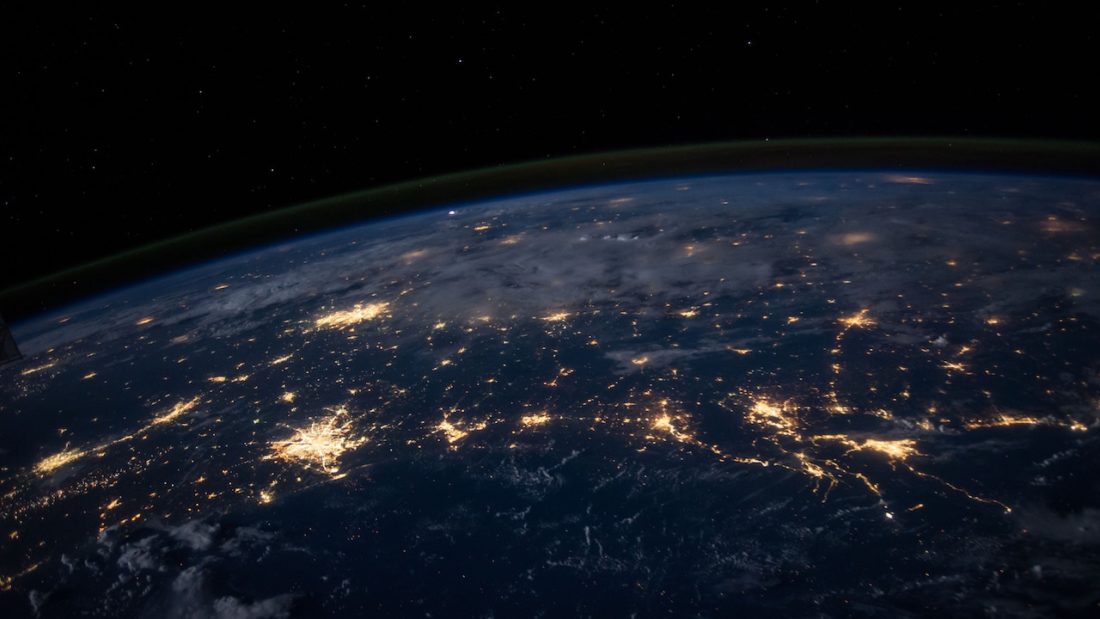Some have sought to integrate science and faith by turning science into theology. This sort of thinking was proposed by the Jesuit anthropologist Pierre Teilhard de Chardin, the environmentalist James Lovelock, and the panentheists Charles Hartshorne, John Cobb and Charles Birch.
Lovelock promoted the idea of a global ecosystem. He argued that the global ecosystem should be regarded as an entity, even an organism, which he has named “Gaia”. The earth’s ecosystems interlock to create a global network of feedback systems that regulate the earth’s being. Lovelock describes Gaia as: “A complex entity involving the Earth’s biosphere, atmosphere, oceans, and soil; the totality constituting a feedback or cybernetic system which seeks an optimal physical and chemical environment for life on this planet.”[1]
Lovelock’s idea of Gaia is in part description of what undoubtedly exists (vis: the interlocking, interdependent ecosystems of planet Earth that have allowed life to develop) and part plea for humanity to put their faith in Gaia and co-operate with it.
We are to put our faith in Gaia…? Hmmm.
Let’s turn to the thinking of a French anthropologist Teilhard de Chardin.
Teilhard believed that God has implanted into sub-atomic particles an urge to attain unity, greater complexity and consciousness. Sub-atomic particles therefore have a rudimentary consciousness. Particles and organisms continued to evolve until fully functioning human consciousness (“noogenesis”) occurred. He believed that life would continue to develop further until planetary consciousness occurs, and everything is brought into union with God. This “Omega Point” is where the church becomes the body of Christ in a literal sense.[2]
It is fair to say that the thinking of Lovelock and Teilhard de Chardin differs from most Christians who understand that atoms and planets are the resultof a “mind,” but are not themselves “mind.”
Whilst it would be unfair to say that Teilhard and Lovelock’s positions are a form of paganism, they do, perhaps begin to point in that direction. So, what is Paganism?
The driving philosophy behind paganism is “monism,” the conviction that everything is “one.” It believes that everything shares the same substance and the same force of nature—god. As such, there is no external creator. Everything that exists constitutes god.
Paganism therefore has no room for a personal God and can offer no sense of personal meaning. You just lose your identity in something bigger. Neither can paganism offer any answer to the intractable conundrums of suffering or the reality of evil. Crucially, paganism has no provision for forgiveness or eternal hope.
Christians, on the other hand, understand that the Earth is sacred, not because it is God, but because God made it. This means that even though Earth has been corrupted by evil and suffering, it remains special. It remains special even though God will eventually remake its brokenness and combine it with heaven to create an eternal kingdom (2 Peter 3:12-13; Revelation 11:15; 21:1-2).
The Bible says that God has given humankind the ability and the authority to tend the environment much as a gardener would tend an unruly garden, i.e. make it fruitful (Genesis 1:27-28). The Hebrew word kabash, meaning “subdue” used in Genesis 1:28 can mean “violate” but that is not the meaning here. In this context, it means, “to have control over.” The clear teaching of the Bible is that the environment should not be abused by the greedy or the selfish. Far from it! God’s commandment to Adam and Eve was that they work the land and “take care of it” (Genesis 2:15).
It is very wise and appropriate wisdom for our day.
So, let’s look after the planet. It is a sacred entrustment.
[1] J. E. Lovelock, Gaia: A new look at life on Earth, (Oxford: Oxford University Press, 1979), p.11.
[2] P. Teilhard de Chardin, Towards the Future trans. R. Hague, (London: Collins, 1975).


